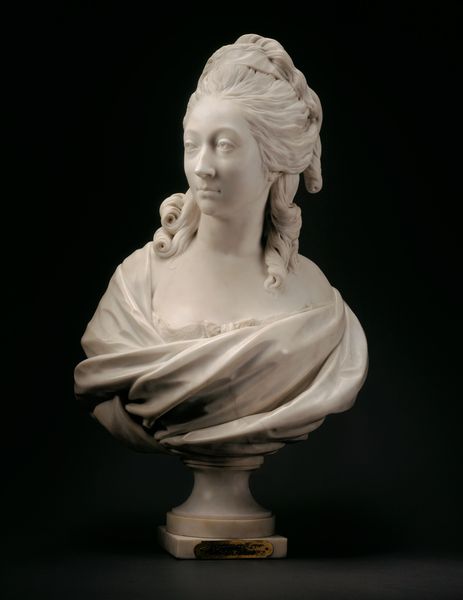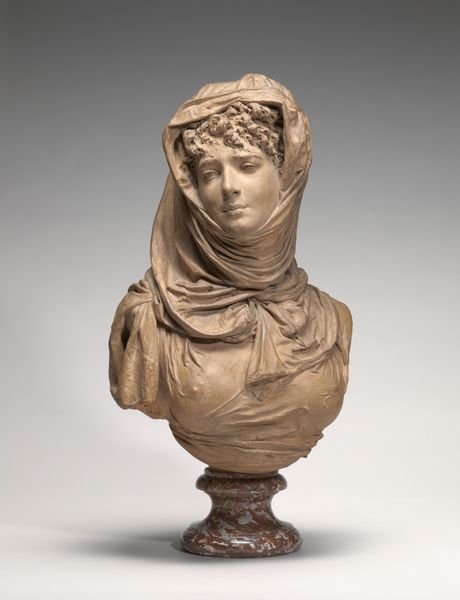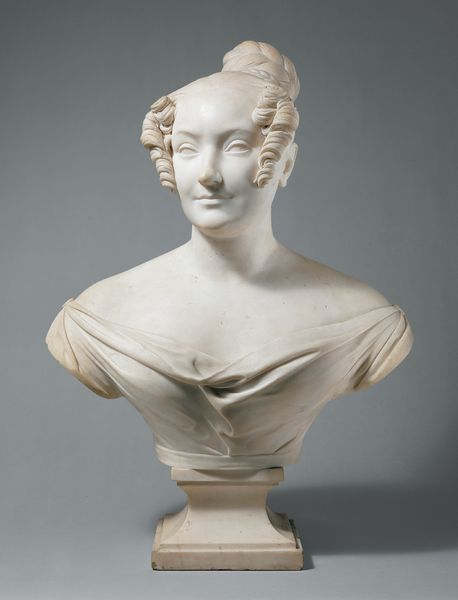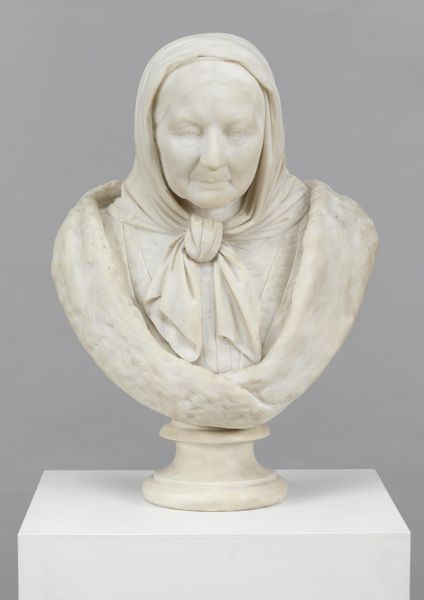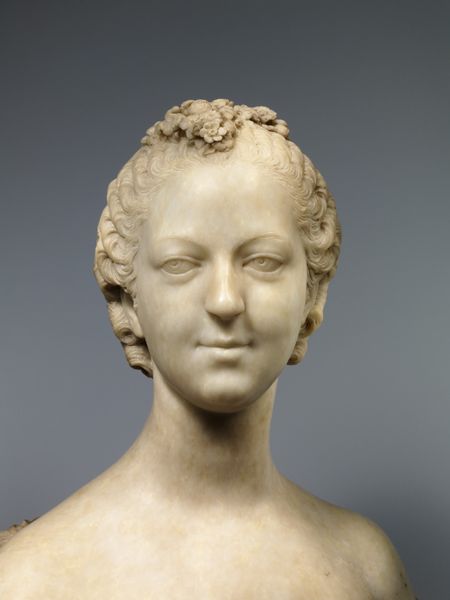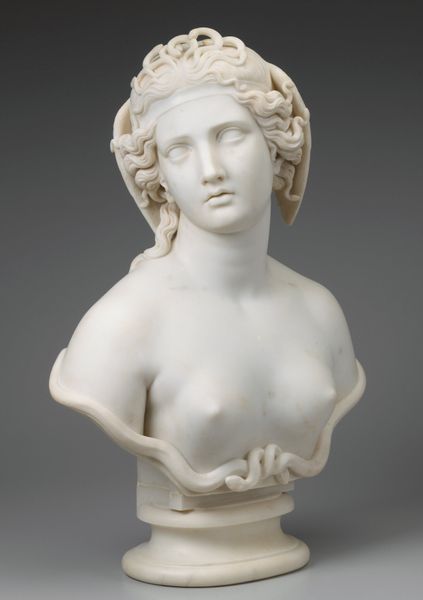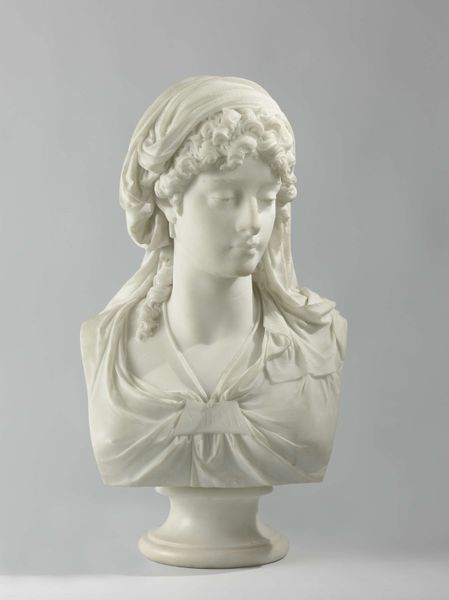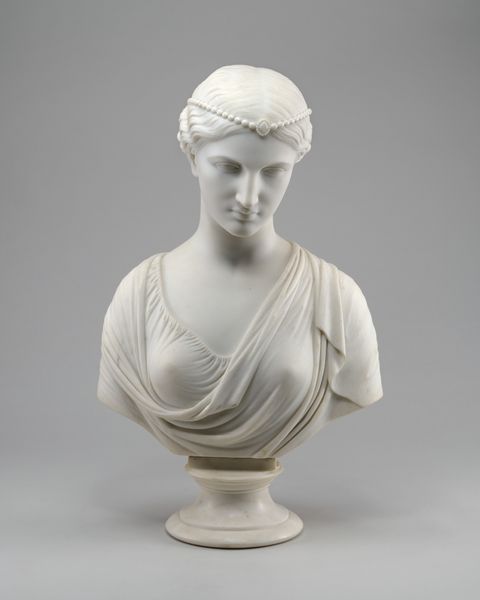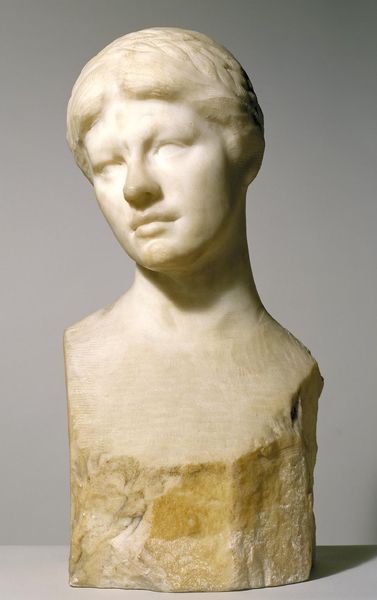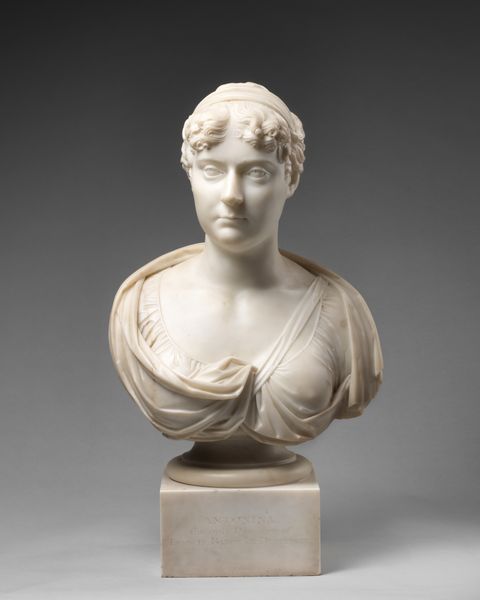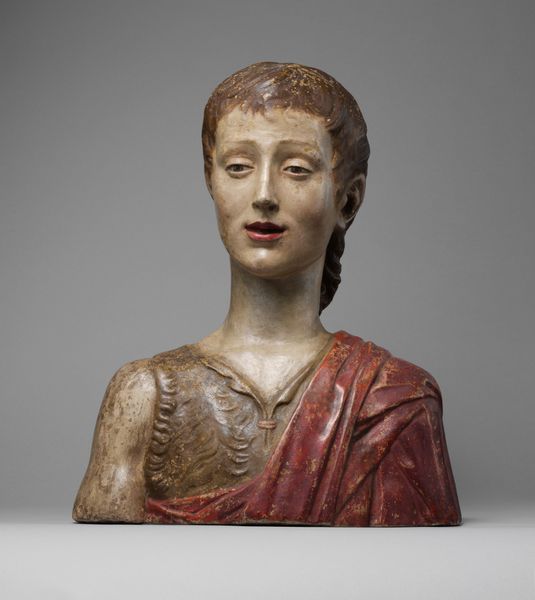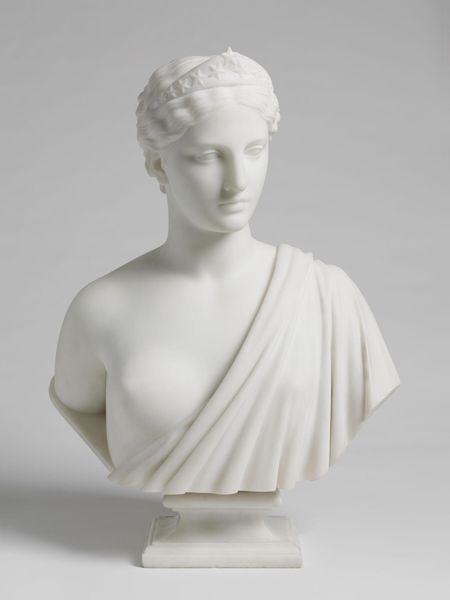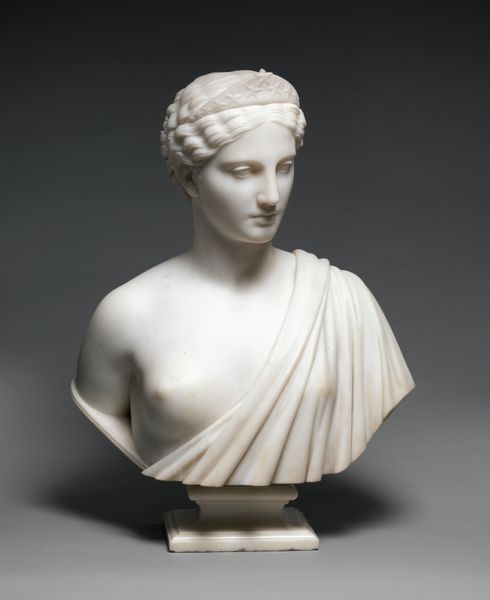
sculpture, marble
#
portrait
#
neoclacissism
#
sculpture
#
classical-realism
#
sculpture
#
academic-art
#
decorative-art
#
marble
Dimensions: Height: 19 3/4 in. (50.2 cm)
Copyright: Public Domain
Editor: Here we have Antonio Canova's marble sculpture, "The Vestal," created sometime between 1814 and 1828. It's just strikingly serene. There's this...almost otherworldly quality to her gaze and the way the drapery falls. How would you interpret this work? Curator: Serene is a good word, indeed! For me, Canova's Vestal transcends mere beauty. She evokes the ideal - a state of grace, a sense of devotion to something greater. There's a softness in the marble, isn't there? The way the light catches the folds hints at a concealed power. But a 'vestal', like those women in Ancient Rome sworn to celibacy, also whispers a life dedicated to ritual and restraint. She seems both present and absent. Do you get a sense of that contrast? Editor: Yes, definitely. I see the idealized form, but also that hint of something inaccessible behind the eyes. Almost like she exists in another plane. Curator: Exactly! And Canova was the master of blending that sense of tangible beauty with ethereal detachment. The Neoclassical style encouraged the purity of line, while marble’s permanence mirrors eternal dedication. Imagine the artist, slowly coaxing this image of quiet resolve from a block of cold, unforgiving stone! It is like a silent echo, calling from antiquity. Editor: Thinking about the time invested to get that level of detail, it’s awe-inspiring! Curator: It is, indeed. And maybe that painstaking process becomes part of what we feel when we look at it: patience, dedication and skill. Thanks for those observations, very useful indeed. Editor: Thanks for guiding my thoughts! It gives a deeper resonance when thinking about the time and technique involved.
Comments
No comments
Be the first to comment and join the conversation on the ultimate creative platform.
